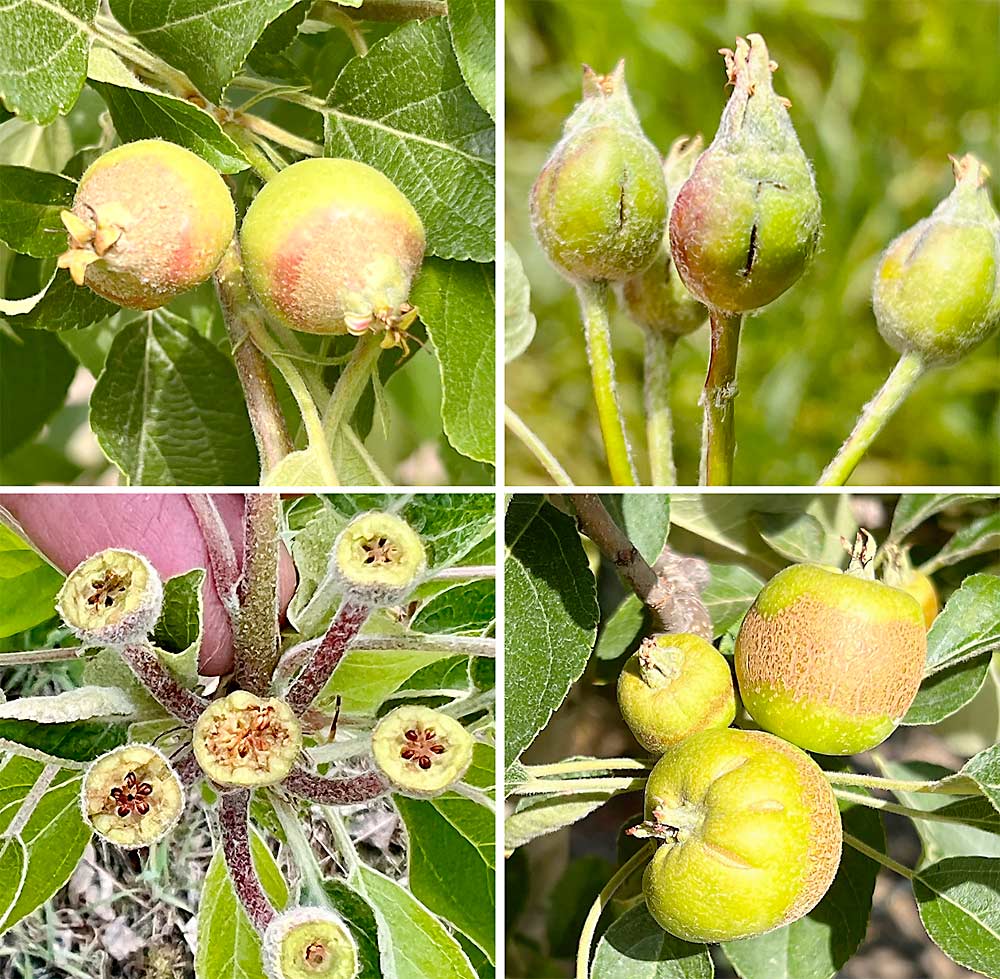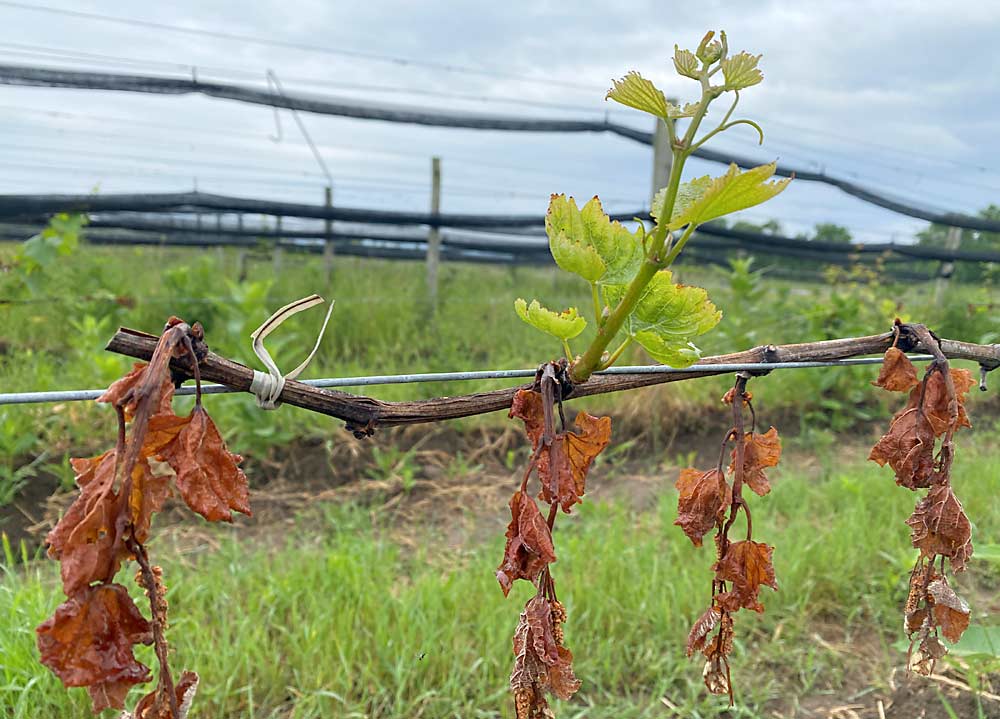
Freeze events in February and May mean New England growers will be harvesting less fruit this year. Apple losses varied across the region, but stone fruit was hit particularly hard.
New Hampshire grower Trevor Hardy said he probably lost 75 percent of his apple crop in May, after losing all of his peaches in February. He grows more than 300 acres of tree fruit.
“Fruit high in a tree was OK, but everything 6 foot and lower was pretty much gone,” he said.
In Vermont, grower Bill Suhr lost all of his peaches, cherries and plums in February, and he estimates he lost about 35 percent of his apples and pears to a May 18 freeze. In his 24 years of growing fruit, it was by far the worst damage he’s seen — and some Vermont growers lost their entire apple crop, he said.
“We’re grateful we have the fruit we do have,” Suhr said in June, when he also was dealing with drought and high temperatures. To adjust, he was focusing more on alternative revenue sources such as his hard cider tasting room.
Massachusetts lost its entire peach crop on Feb. 4, when temperatures dipped as low as minus 14 degrees Fahrenheit, said University of Massachusetts extension educator Jon Clements. In June, he was seeing cracked apples, frost rings and fire blight in the aftermath of the May 18 freeze. He predicted Massachusetts could lose up to one-third of its apple crop.
In Connecticut, fruit losses from the February and May freezes totaled $8.1 million and impacted over 1,000 acres, said University of Connecticut extension educator Evan Lentz.
Connecticut grower Peter Rogers called the damage across the state significant, but much depended on location and developmental stage. Some growers experienced minimal losses, others devastating losses.
At Rogers Orchards, ridgetop blocks fared pretty well, but losses in the blocks in valley bottoms ranged from 20 to 80 percent. Honeycrisp and Cortland seemed to be hit the worst, while Macoun was actually thinned well by the event, said Greg Parzych, who runs the orchard with Rogers.
“For us, like others, it was based on variety and elevation, and really came down to a tenth of a degree or so,” Rogers said.
In Maine, grower Andy Ricker expected an apple crop loss of 10 to 20 percent. There was some damage to low-lying blocks with earlier blooming varieties, but most of his family’s 300 acres are scattered across flat hilltops with good air drainage, so he was expecting more frost rings than full losses.
“I’m a farmer, and farmers are optimists,” Ricker said. “I’m hoping everything turns out good.”
Impacts from the May 18 freeze event were felt across the entire Northeast, but New York orchards and vineyards were not hit quite as hard as New England.
Damage varied in the Hudson Valley, but it might have been worse in the northern part of the valley, said Cornell Cooperative Extension tree fruit specialist Dan Donahue. The May 18 freeze hit during the valley’s thinning season, when fruit was 8 to 10 millimeters in diameter. Donahue was expecting both yield and quality reductions such as increased russeting, frost rings and, perhaps, smaller fruit.

In New York’s Finger Lakes region, frost took a toll in nearly every vineyard but did much more extensive damage in low spots and on more advanced cultivars, said Cornell University associate professor Jason Londo.
John Teeple, executive director of the Premier Apple Cooperative and a retired apple grower in Western New York, said the May 18 freeze hit unusually late in the season, when fruit had already developed, and lasted unusually long, lingering throughout the early morning hours. Damage varied widely but seemed to be worse in blocks farther away from Lake Ontario, where most of Western New York’s orchards cluster along the southern lakeshore. He was expecting a smaller regional apple crop and some frost-scarred fruit.
“It’ll be a nice-size crop,” Teeple said. “There’s no reason why it shouldn’t be marketed well.”
Cornell Cooperative Extension fruit specialist Mario Miranda Sazo said most damaged fruitlets were in the tree bottoms. A decent crop could still be salvaged from the tops, but it was going to require some careful thinning.
Grower Jill MacKenzie said she and her husband lost 70 to 80 percent of their NY 1 (marketed as SnapDragon) crop and had similar damage to a nearby Honeycrisp planting. But Gala and Fuji in the same block were unscathed, and the rest of the farm looked fine.
Brett Kast, who grows 500 acres of apples about 5 miles south of Lake Ontario, has experienced his share of freezes, but he said the widespread scope of the May event was unusual. In June, he was still gauging the extent of the damage — which seemed to vary by location, elevation and variety — but still expected an average-size apple crop.
“The big takeaway is it’s still a good crop,” Kast said. “We’ll just have to handle it differently. Thinning and picking will have to be more precise.”
—by Matt Milkovich






Leave A Comment